Giants Among Us
A walk with Frank Costigliola, a gentleman farmer and a scholar
By Julie (Stagis) Bartucca '10 (BUS, CLAS), '19 MBA
Photos by Peter Morenus
T
he first lesson imparted by Frank Costigliola as we motor and meander around his 195-acre farm a few miles from campus in Storrs is his secret to balancing research, writing, teaching, and farming: a carefully calibrated system of napping.
"What I do, and I recommend it, is short naps. Five to 20 minutes. You wake up feeling like it's a new day," says Costigliola, a U.S. foreign relations history expert in his 50th year as a professor, his 24th at UConn. "First of all, I don't drink coffee because coffee interferes with naps. Coffee is a zero-sum game. What I do for a quick boost sometimes, is eat one of these chocolate-covered cherries, which are superb, and one of those, because I don't drink coffee, does the job."
The first lesson imparted by Frank Costigliola as we motor and meander around his 195-acre farm a few miles from campus in Storrs is his secret to balancing research, writing, teaching, and farming: a carefully calibrated system of napping.
"What I do, and I recommend it, is short naps. Five to 20 minutes. You wake up feeling like it's a new day," says Costigliola, a U.S. foreign relations history expert in his 50th year as a professor, his 24th at UConn. "First of all, I don't drink coffee because coffee interferes with naps. Coffee is a zero-sum game. What I do for a quick boost sometimes, is eat one of these chocolate-covered cherries, which are superb, and one of those, because I don't drink coffee, does the job."
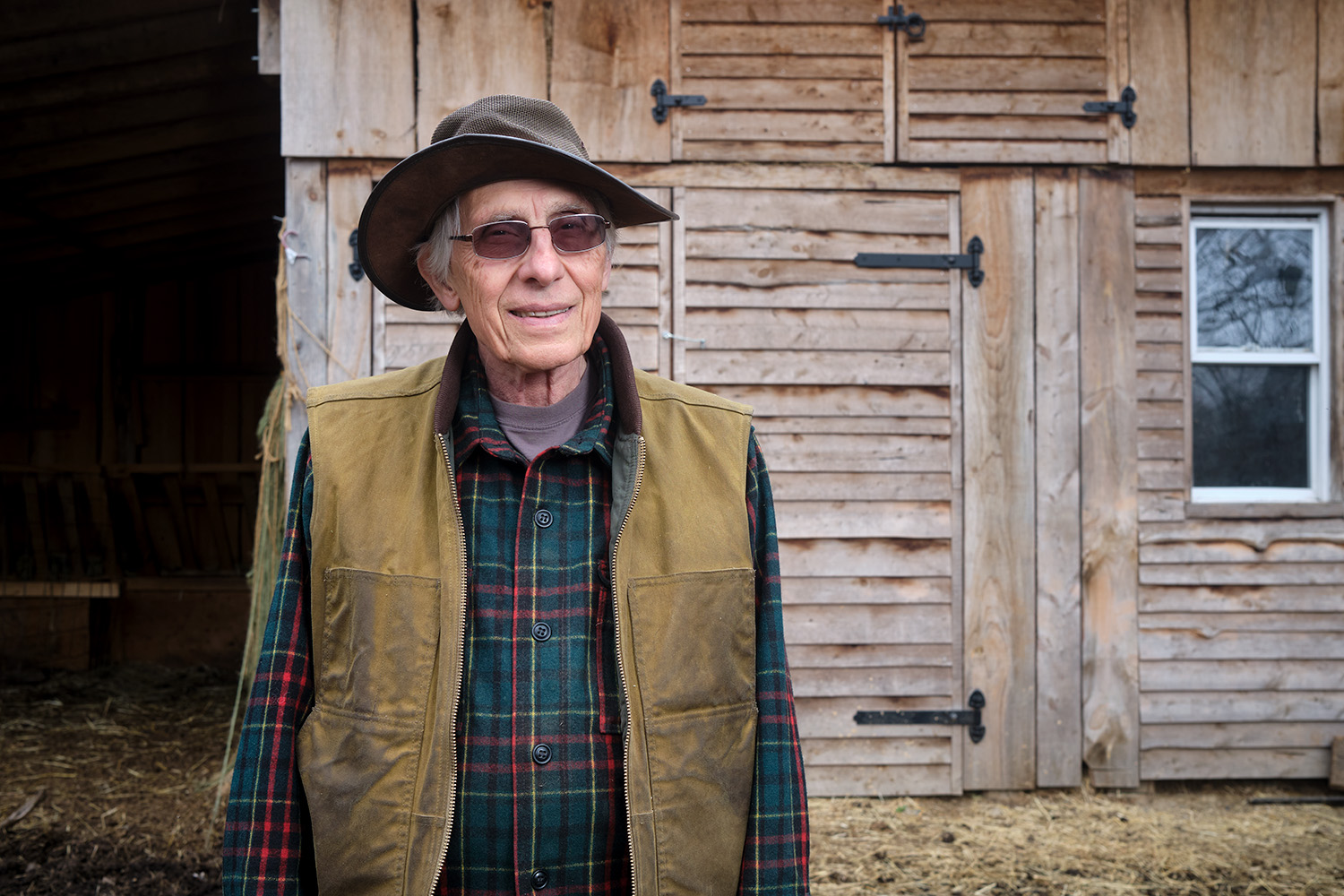
The Winter Quarters
He has a lot more to say about the naps, but the point is he needs the energy. CostigÂliola wakes in the predawn hours to respond to students' online discussion posts for the seminar he debuted last fall, "Personality and Power Since 1900," and tend to his 12 beef cattle, or work on his latest book (a "cradle-to-grave" biography of Cold War"“era diplomat George F. Kennan), or lead the loving restoration of his property to honor its history and carry on the farming tradition of the area.
The land, called Dunhamtown, as it was owned and farmed by the Dunham family from 1695 to 1873, contains multitudes, like Costigliola himself. Corrals and pastures, flowing water and outbuildings, wooded trails — each enclave a stunning backdrop for a meandering two-hour conversation about history and farming and, really, about life. Join us, will you?
The Winter Quarters
From his house, which is just about a mile from the south edge of campus, we ride through his backyard in an RTV utility vehicle down what Costigliola calls "The Great Road" to reach this spot. Contained by an electrified fence to keep coyotes at bay, this tree-studded clearing is home to the cattle in the winter and The Complex, a pine- and cedar-shingled building for food, hay, machinery, and other supplies.
Wearing a trapper hat and a heavy cream-colored knit sweater, Costigliola exits the orange mini-truck we're riding in, unfastens a chain from a metal farm gate, opens the gate, drives us through it, leaves the cab again, closes the gate, and refastens it. It's a series of methodical movements, but therein lies a bit of elegance, even magic — things are slower here on the farm, a little bit more the way things used to be. Perhaps even more magical: waiting on the other side of the gate are 11 gorgeous, auburn cows (and one sweet black-and-white one).
Costigliola first became a gentleman farmer in 1972, when he started his career at the University of Rhode Island and bought 10 acres near that campus for $4,500.
"You could do that then," he says. He raised cattle there until he left for UConn in 1998. "I didn't think I'd ever do it again."
But with a property for sale in his actual backyard, Costigliola wanted 10, maybe 15 acres to "play around with." The owner would only sell all 195, and that's how he and his wife, Diann, ended up with this sprawling, picturesque plot.
He wasn't going to raise cattle, either, but as with most things, Costigliola is all-in, a subject-matter expert on raising and breeding his grass-fed Devons (supposedly the breed brought to America by the Puritans), connected with people in his community who take care of the artificial insemination and humane slaughter.
He had a grandfather with a farm growing up, but he didn't know him very well — "He never learned English, I never learned Italian," — and was inspired by the back-to-the-land movement of the 1970s to buy the land in Rhode Island. He had planned to live on a commune in Ithaca, New York, after graduate school at Cornell — "If you got a job, you were a sellout." He didn't think he'd be a good teacher, but he took a position at URI anyway, and the rest is, well, history.

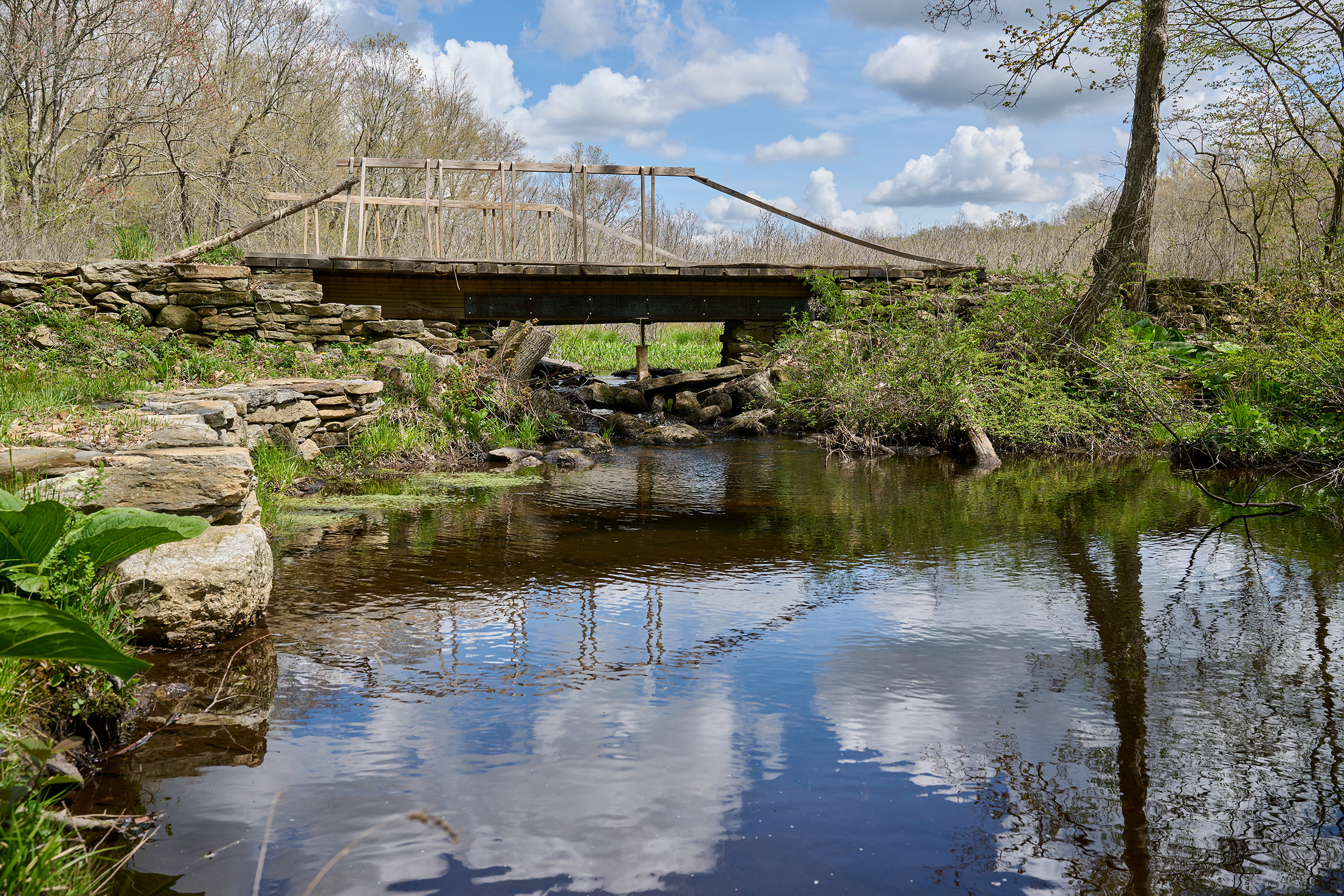
Fort Lee
Fort Lee/ Bradford Beach
Driving out of a gate on the other side of the cow pen, we come to another storage structure and exit the truck. To the left, you can cross a shimmering stream via the bridge Costigliola built using planks from his white oaks, or sit along the water at a table made from hearthstone uncovered on the property. Based on an 1870s deed, Costigliola estimates the house it came from was built in the late 1700s.
Frank and Diann call this area Fort Lee, as in New Jersey, near where Frank grew up alongside the George Washington Bridge; the table sits on "Bradford Beach," a nod to the spot on Lake Michigan in Diann's hometown of Milwaukee.
Frank Costigliola was born in Spring Valley, New York, in 1946. The son of Italian immigrants who weren't educated past the fifth grade, Costigliola took a liking to school right away (so much so that his kindergarten teacher was invited to his 5th birthday party).
In early 1945, Costigliola's uncle Charles died of blood poisoning after an injury at a war production plant. His mother had immigrated to the U.S. at age 9 and was sent to live with Charles, who was her much older half-brother.
"He was a giant in my mother's mind, like a father," Costigliola says, his voice cracking. "I grew up with stories about him. As a little kid, 2 years old, people talked about Franklin Roosevelt, who died around the same time.
"And I think, in my mind, I blurred the two of them. There was this sense of giants who had walked the earth," he says. "It's a sense of — there was something important before." That sense, good high school history teachers, and the feeling that "the present is very confining" led Costigliola to study history.
"If you need to look beyond the present, the only way you can have an idea about the future is to have an idea about the past in general," he muses. "The past adds richness, texture, and meaning to understanding . . . you don't really know who you are — as an individual or as a nation — until you know how you got there."
Such is the root of Costigliola's life's work as a preeminent scholar of United States foreign relations, but the tentacles of this philosophy reach out into everything he does — shaping young lives, mentoring graduate students, and tending to his land.
Club Med
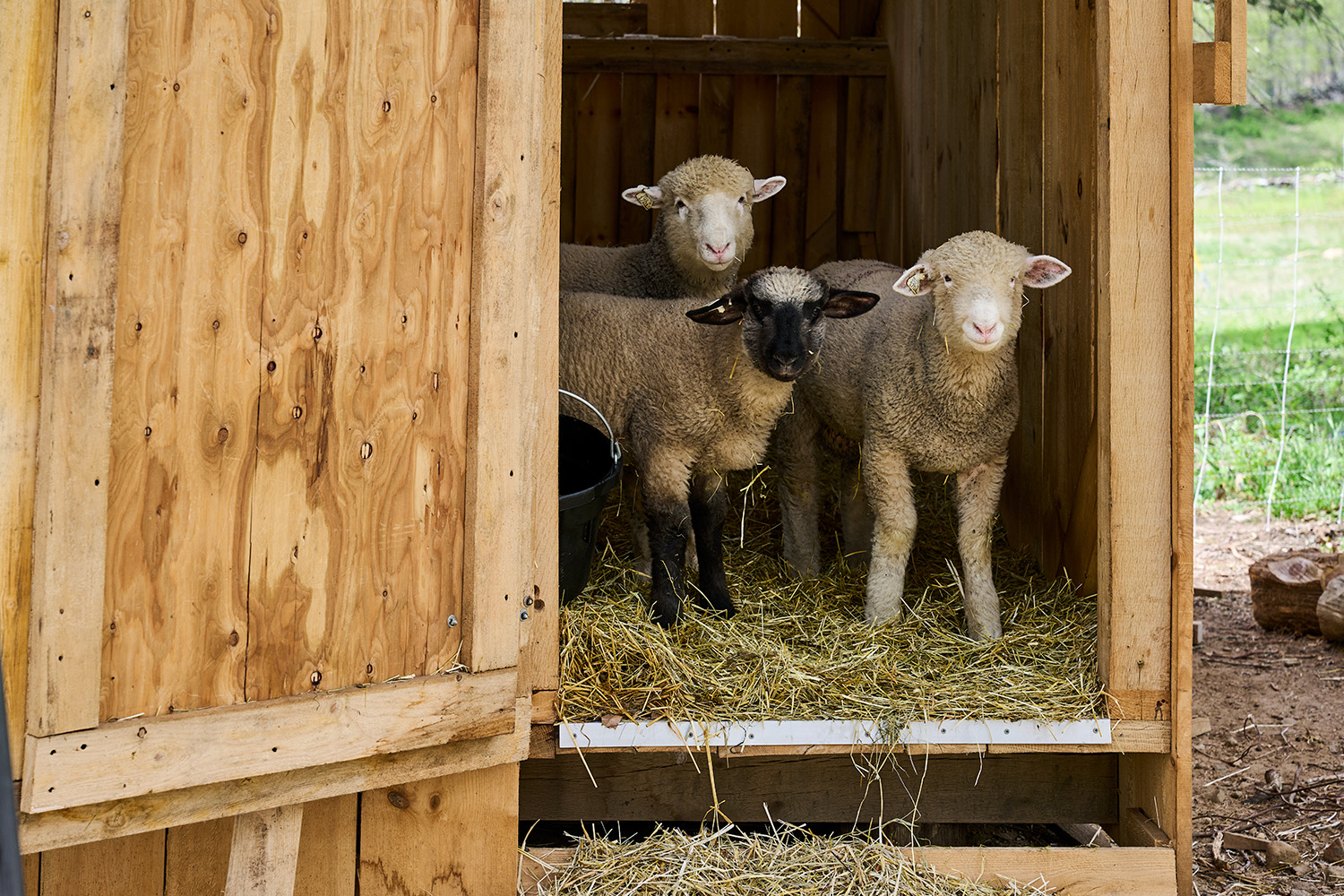
Pens and sheds are crafted from trees on the property, stone walls are lovingly recreated. "Every one of those stones, someone picked up and moved — that work, that effort, you wish the stones could talk and say where they'd been . . . " says Costigliola.
Club Med
A bit farther down the wide dirt-and-gravel road, we reach a 4-acre section of the property. An in-progress stone wall encloses a once-and-future corral next to a meadow and a small barn. Like most of the buildings here, it's made from Costigliola's trees that were sawed at his neighbor's mill and is where Costigliola will keep a half-dozen sheep procured from UConn.
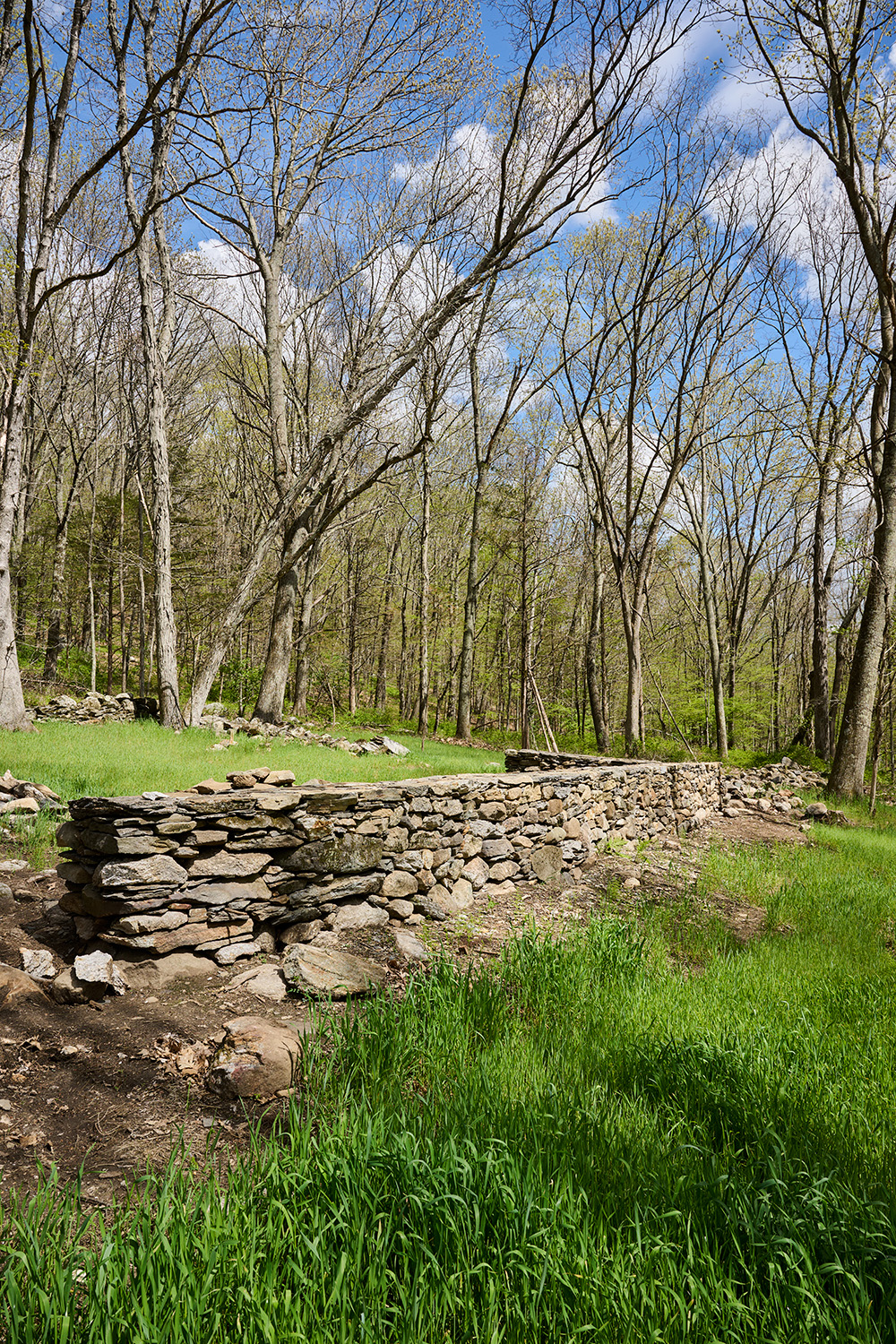
Dunhamtown was covered in pricker bushes when Costigliola bought it, but he's bringing it back to its former glory. Huge swaths have been cleared, buildings and bridges built, and irrigation systems installed. Remnants of centuries-old stone walls — where much of the stone had been sold off — are being rebuilt, including one that forms a corral Costigliola will use for the sheep (which will also be sold for meat; I wish I had taken a picture of the way he looked at me when I asked if he'll be using them for wool).
"You see that tree?" he asks, gesturing to one growing just inside the stone corral. The tree is around 150-200 years old, and in order for anyone (human or animal) to allow it to grow where it did, the wall must not have been used as a corral anymore — so this hasn't been used as a corral in at least 150 years.
"At the edge of every field here, there's these piles of stones. Every one of those stones, someone picked up and moved," Costigliola says. "That work, that effort, you wish the stones could talk and say where they'd been and what people had done with them.
"The big thing here is me just restoring what people worked very hard" — his voice catches, one of several times his reverence for those who came before causes emotion to overcome him — "people worked very, very hard to do. I'm trying to restore it. I have enormous respect for them, whoever they were."
Big Pines
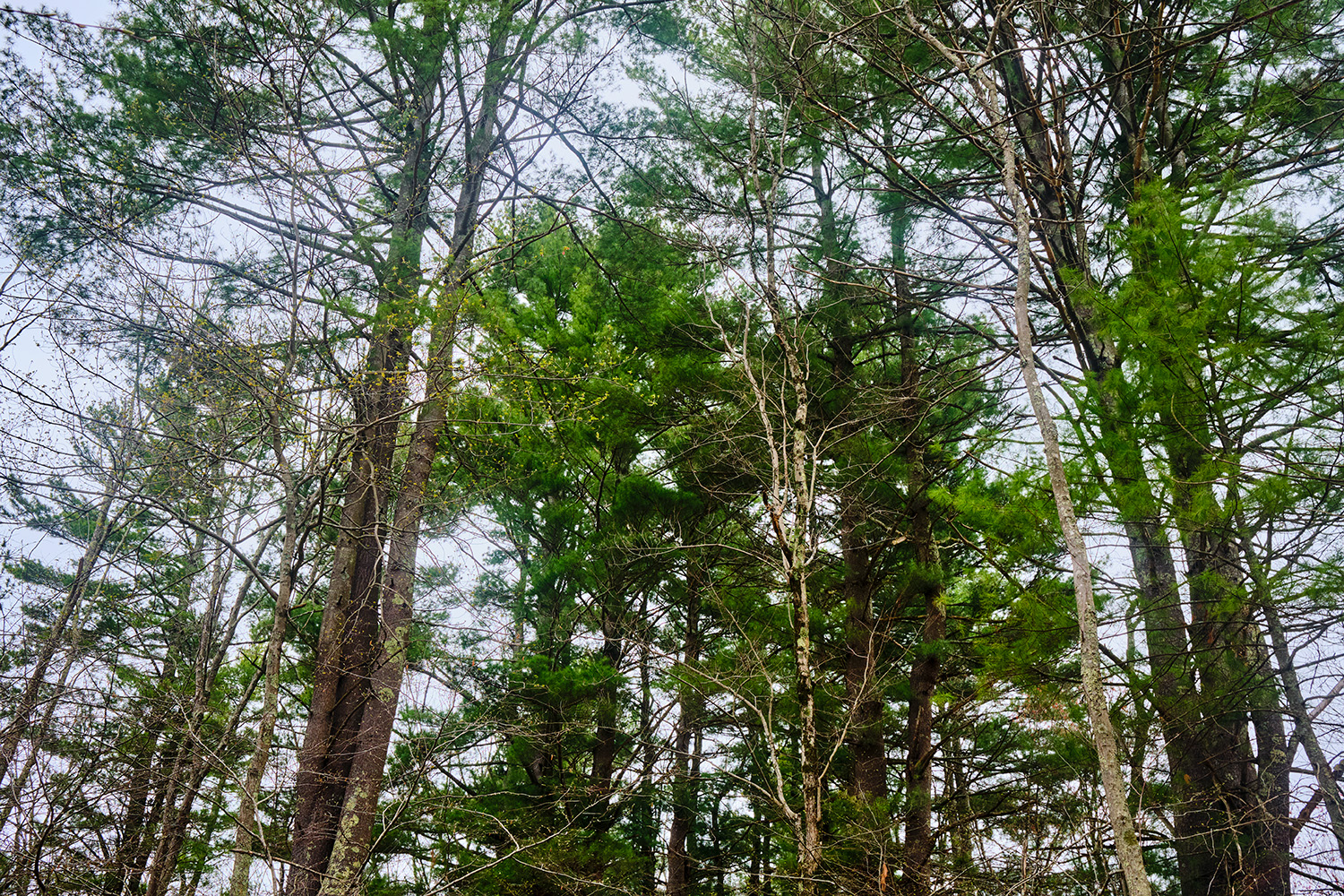
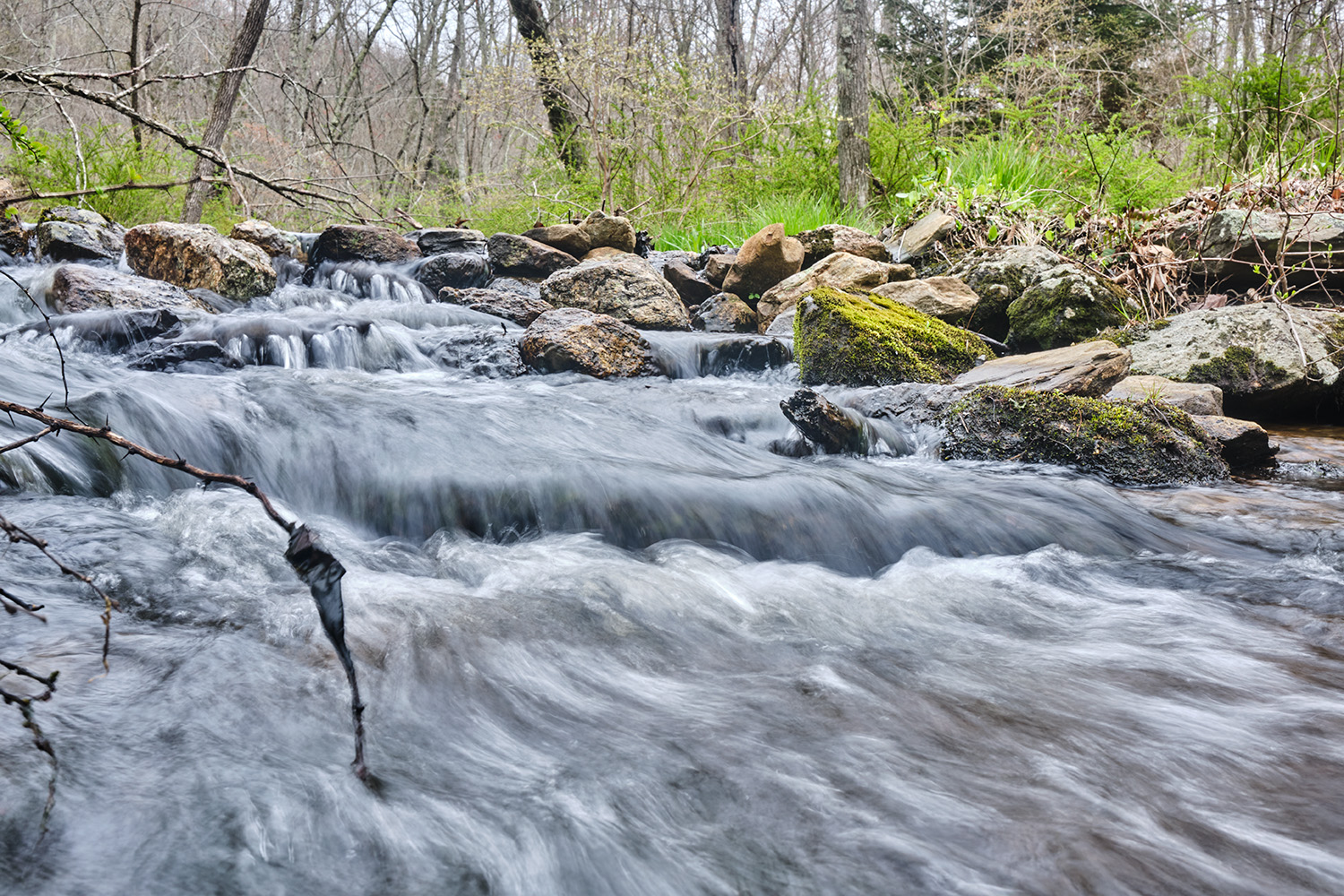
"This is a place for solitude and contemplation"
Big Pines
We leave the RTV behind near Club Med and continue on foot, hanging a left after a small pond next to the new sheep barn. Ahead is a wooded area with trails running through it and fallen leaves covering every inch, and a brook you can cross on a footbridge of big, smooth stones when the water isn't too high. This is a place for solitude and contemplation, leading to another road that goes down to wide-open pastures.
We've talked a lot about farming, getting in the weeds on everything from how the cows are bred to where on the property trees were cut down to make lumber for each structure. I finally ask about Frank's career and the way he relates to students.
Weeks before visiting the farm, I sat in on a session of his new seminar, "History 2205W: Personality and Power Since 1900," where students analyze how the personalities of Adolf Hitler, Franklin D. Roosevelt, Winston Churchill, Joseph Stalin, Hillary Clinton, and Donald Trump affected their approach to power and what they accomplished.
Introduced last fall, it was a hit among students. In the four books he's written, Costigliola explores how culture, emotion, and even gender norms dovetail with international relations, so the seminar discussions live in his sweet spot. Even for nonhistorians, the course content is fascinating. "I have to admit, I knew you couldn't miss when you had Hitler and Trump in the same course," Costigliola quips — but in speaking with students one learns the true draw lies in Costigliola's teaching style and his humanity.
"I've never felt so heard by a professor before," says Jessica Paxi, a third-year economics major from East Windsor, Connecticut.
Students praise the way Costigliola draws out their opinions, daring them to substantiate their views and articulate themselves in ways they might not have felt comfortable doing before.
"Everything you say is accepted and there's no judgment, but he asks questions and challenges you to back up your opinion. I surprised myself because I didn't think I had strong political views," says Sammi Peters, a recent digital media and design grad from Southbury, Connecticut. "Writing a lot about [my views] challenged ideas I thought I had."
He's here to teach them history, sure, but Costigliola feels "we have an obligation to help students feel better about themselves and maximize their talents." He sees himself, a first-generation student, in many UConn students and wants to encourage them to go after what they deserve and equip them with the tools to do so.
"I respect students. I like them," he says. "Students at elite universities pay for all kinds of services, pay for the networks, the letters of recommendation. Parents feel they're paying for . . . this fancy education, you owe us this. Our students don't feel that way. It's rare they challenge a grade.
"I tell them, if you want a top position, you're going to be competing with people who think they're wonderful — you're wonderful too, but you don't know that; you don't insist on it."
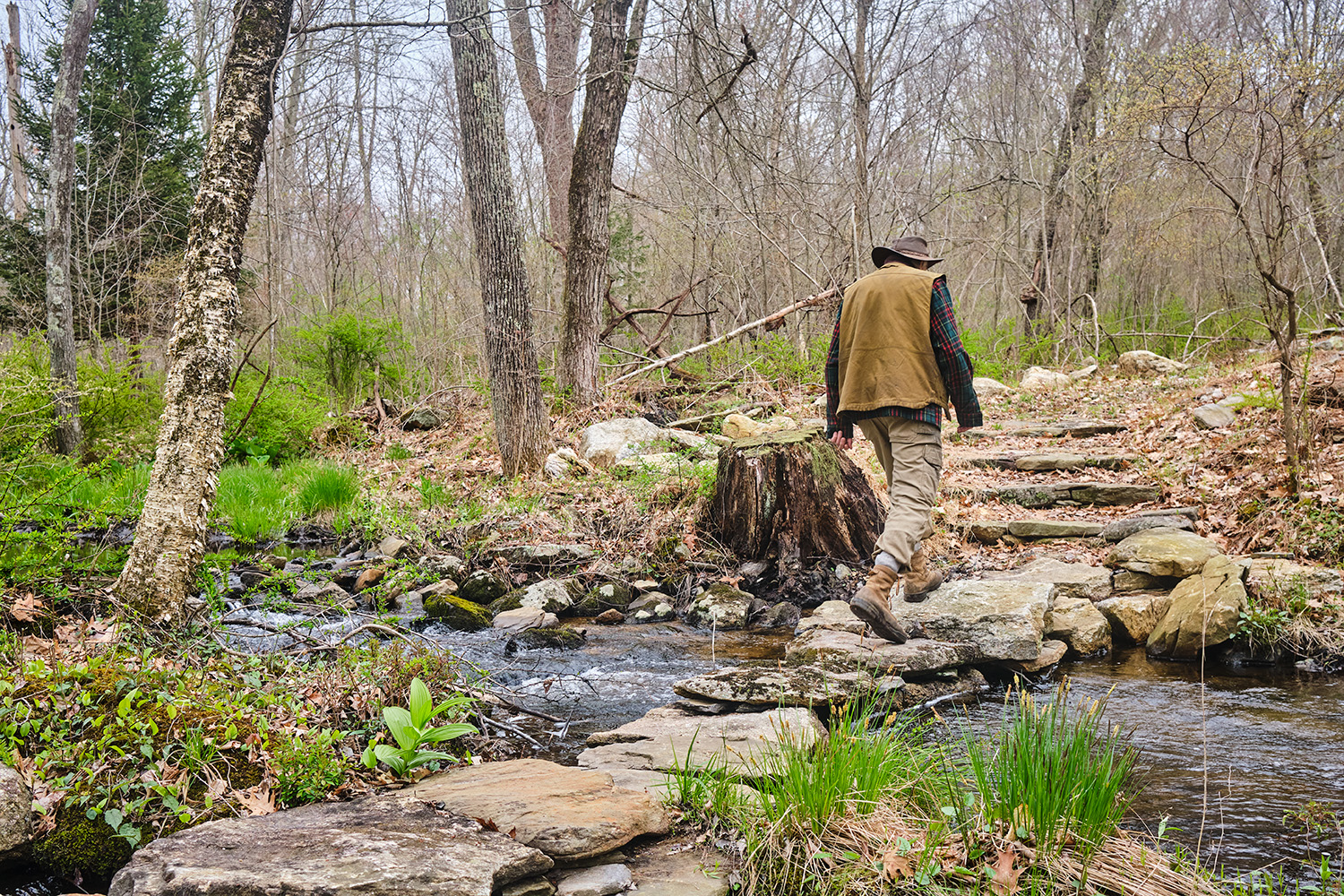
East Field and West Field
The forest trails lead to the road used to bring the cows from winter quarters to these big open pastures of green grass where they live in the warmer months, dotted with evergreen trees, a vegetable garden, and a huge shed that Costigliola's wife calls the "E Shed," for "excessive." The E Shed houses round hay bales, and the adjoining "Shed Shack" is where Costigliola splits firewood in the winter and where a cow might go for solitude and protection just before she gives birth.
It's so easy to get wrapped up in Costigliola's passion and general menschiness that you almost forget his accomplishments as a U.S. foreign relations historian. His books have won awards and introduced culture as a legitimate topic for analysis in foreign relations history; in 2016 he was named a Board of Trustees Distinguished Professor, the University's highest honor for faculty; he has received fellowships from the Institute for Advanced Study at Princeton (where he met Diann), the National Endowment for the Humanities, the Guggenheim Foundation, the Norwegian Nobel Institute, and UConn's Humanities Institute.
"Frank is an astute and empathetic critic, an excellent guide to history and to life, a great sort of companion in learning," says History Department head Mark Healey. "In addition to being an exceptional undergraduate teacher, he is a really excellent graduate mentor — he has a distinguished crew of folks. He's had a big impact on the profession and on the field."
Costigliola's graduate students have gone on to be teachers, professors and heads of history departments at other universities, and national security analysts.
"I can't imagine a better advisor for supporting my project and my voice, and taking my career where I want it to go," says Megan Dawson, who works for the Department of Defense in Washington, D.C., and is currently writing her Ph.D. dissertation on Ukrainian denuclearization in the early 1990s. "In what's historically been a very male-dominated field, Frank has been very supportive of myself and other graduate students, making sure everyone has equal access to opportunities, making sure everyone's voices are heard," particularly women, she says. "He tries to give a wider perspective on panels and when choosing books for a syllabus."
East Field
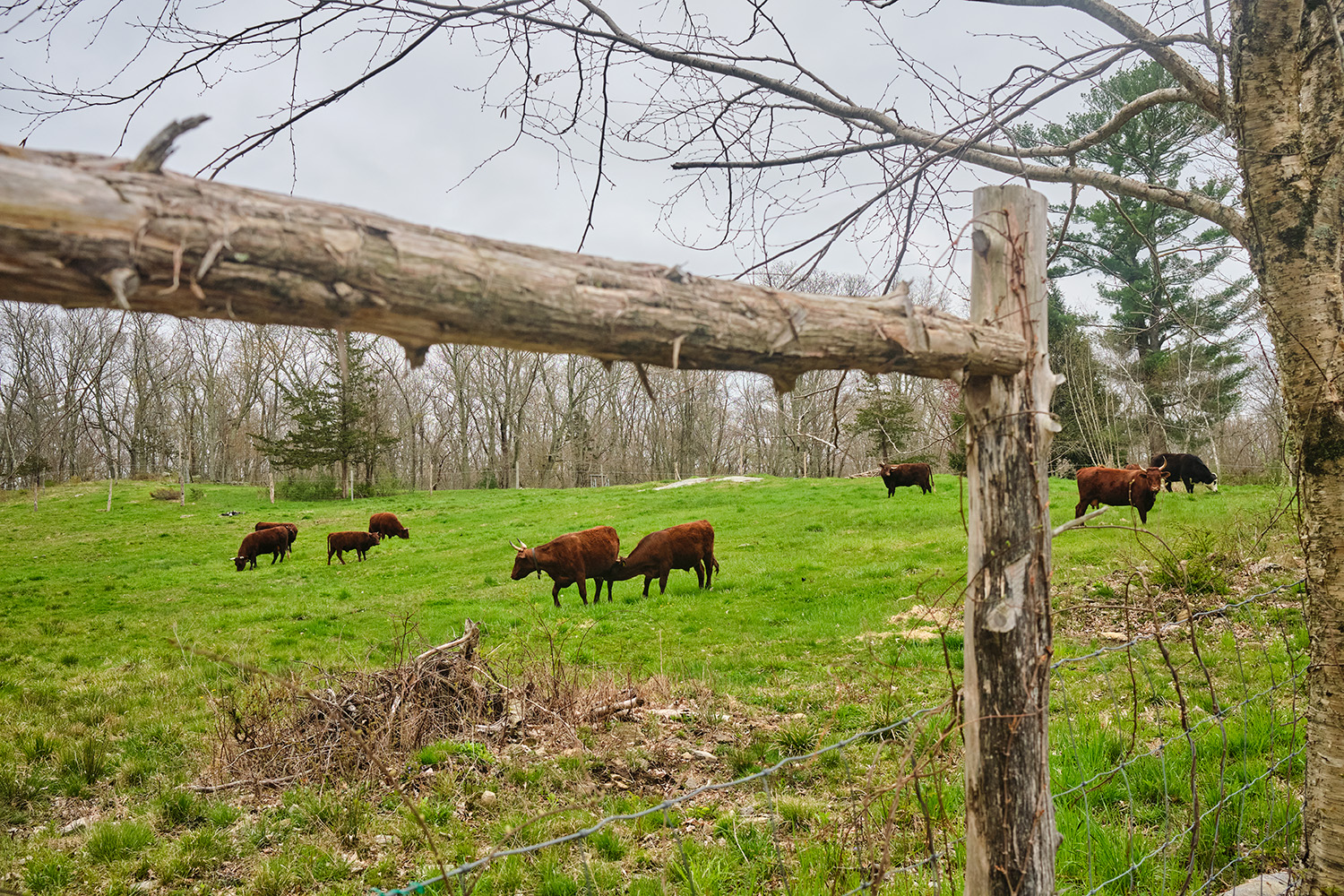
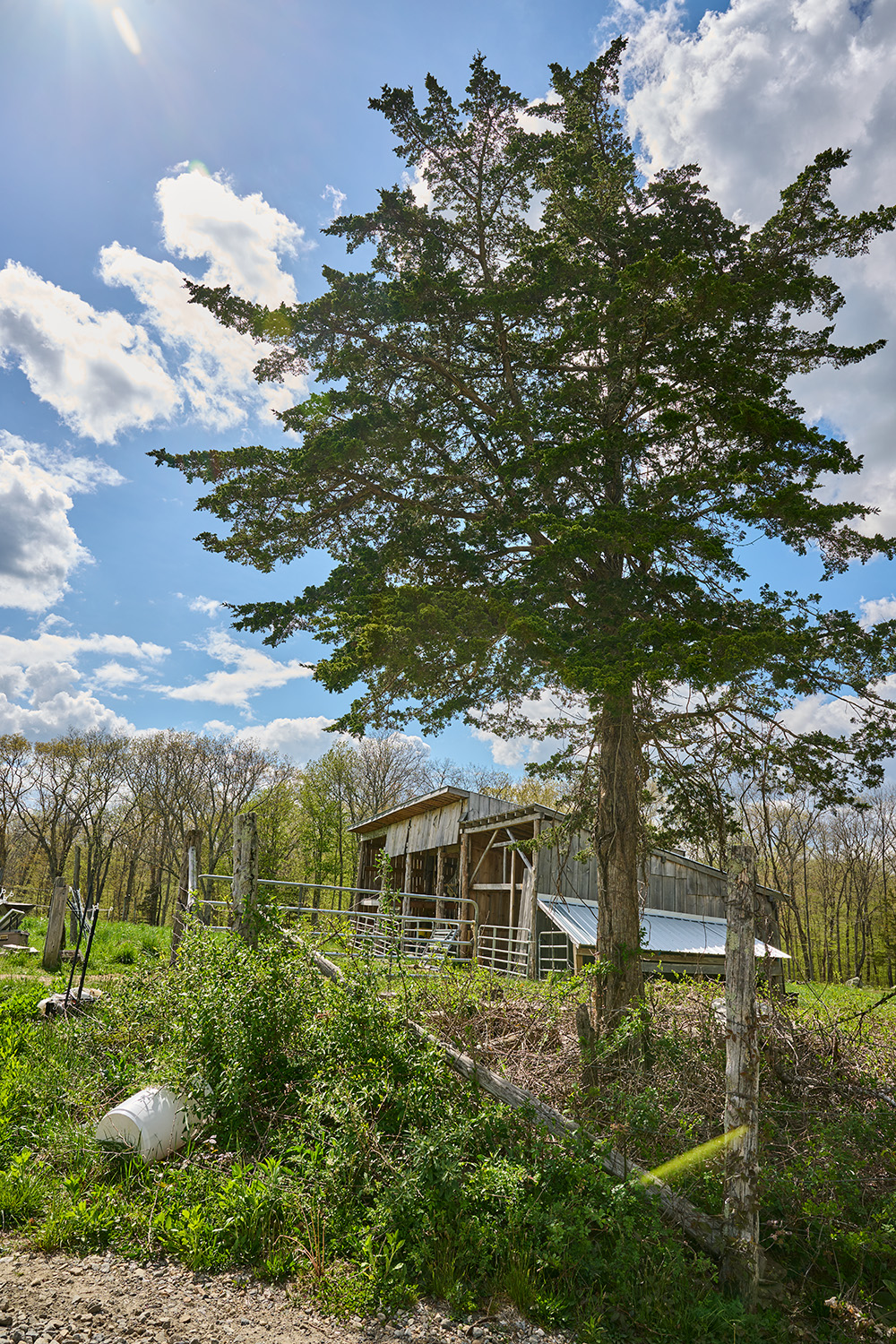
E Shed, West Field
E Shed, West Field
"You don't really know who you are — as a person or as a nation — until you know how you got there."
The summer before Dawson started at UConn, Costigliola ushered her in to a conference of the Society for Historians of American Foreign Relations — an organization over which he used to preside, which recently honored him with its lifetime achievement award. He introduced her to "many people whose books I would read throughout my studies," says Dawson. "He really wanted to make sure the door was open for me to walk through."Â
Toward the end of our journey through the farm, Costigliola acknowledges the good fortune that put him in the position to help others through those doors.Â
He's keenly aware of his privilege as a white male baby boomer, and as a professor whose "schedule is largely his own" and who can afford to do what he does.Â
"So you're not slowing down?" I ask.Â
"No. People say, 'What's your end game?' End game? I'll die!"Â
Until then, he'll continue to host the History Department's Foreign Policy Seminar series, bringing in experts from around the world to talk diplomacy over Indian food in the Wood Hall basement. He'll plan an end-of-semester party for the undergrads in his "Rise of U.S. Foreign Power" lecture. He'll work on his next book, tentatively titled: "Hope over Fear: The Feelings that Got Franklin D. Roosevelt and his America through Depression and War." Tend to his animals. Restore his land. Shape young lives. Take naps.Â
"I'm the oldest person left in the department. Retired friends tell me they manage to kill time," he says.Â
"Why would you kill time? Time is precious."Â

I enjoyed reading this and liked the photos as well.